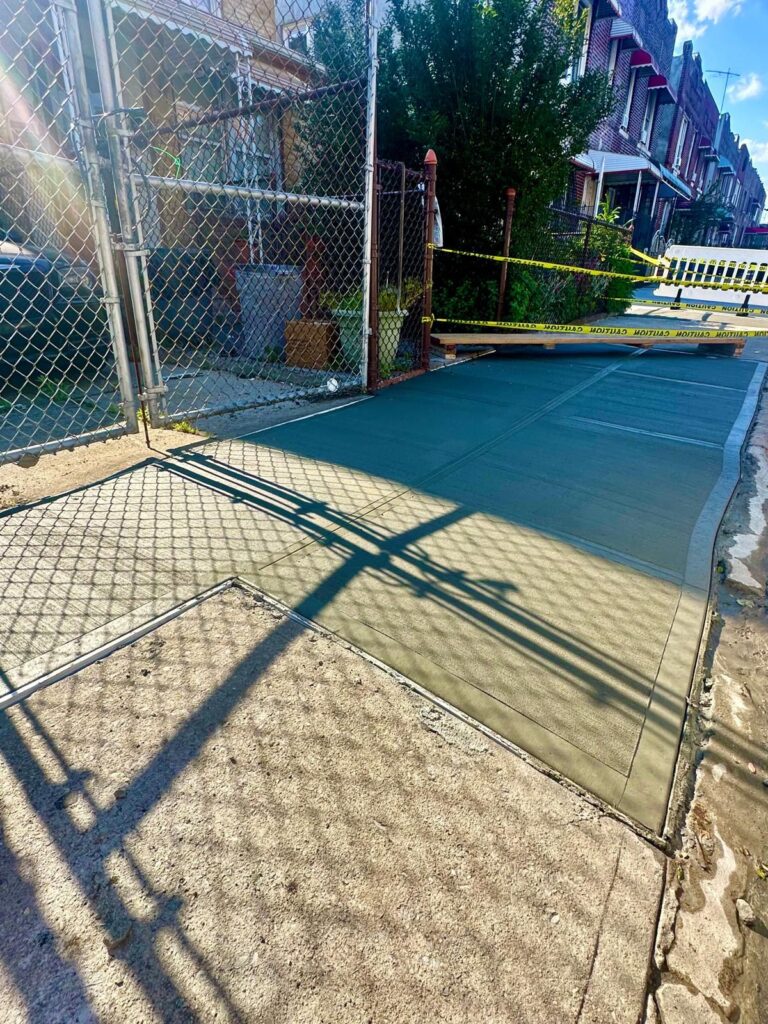Maintaining sidewalks might seem like a minor concern, but in a bustling metropolis like New York City, it’s a critical responsibility for property owners. Regular sidewalk maintenance not only ensures the safety and accessibility of pedestrians but also helps prevent costly violations from the NYC Department of Transportation (DOT). This guide explores the essential aspects of sidewalk maintenance, highlighting why it’s important and how property owners can keep their sidewalks in top condition.
Understanding Sidewalk Violations
A sidewalk violation is a notice issued by the NYC DOT when a sidewalk is found to be in disrepair or poses a hazard to the public. Common violations include cracks, uneven surfaces, and obstructions. These violations can lead to fines, legal issues, and increased liability for property owners if someone is injured as a result of the poor sidewalk condition.
Benefits of Regular Sidewalk Maintenance
Regular sidewalk maintenance offers numerous benefits:
Enhancing Property Safety and Accessibility: Well-maintained sidewalks reduce the risk of trips and falls, ensuring safe passage for pedestrians, including those with disabilities.
Avoiding Costly Violation Fines and Legal Issues: By keeping sidewalks in good condition, property owners can avoid hefty fines and potential lawsuits.
Prolonging the Lifespan of Sidewalks: Routine maintenance can prevent minor issues from becoming major problems, extending the sidewalk’s usability.
Improving Property Aesthetics and Value: Clean and even sidewalks enhance the overall appearance of a property, contributing positively to its market value.
Routine Inspection Tips for Property Owners
Regular inspections are key to effective sidewalk maintenance:
How to Conduct a Visual Inspection: Walk along the sidewalk and look for visible signs of damage such as cracks, uneven surfaces, and loose tiles.
Identifying Common Signs of Damage: Pay attention to small cracks, pooling water, and raised edges which can indicate underlying issues.
Seasonal Considerations for Sidewalk Maintenance: Different seasons bring different challenges. In winter, look for ice damage; in spring, check for water damage from thawing snow.
Effective Sidewalk Maintenance Practices
Implementing the following practices can keep sidewalks in excellent condition:
Cleaning and Debris Removal: Regularly sweep the sidewalk to remove dirt, leaves, and other debris that can cause damage or create slipping hazards.
Repairing Minor Cracks and Chips: Small cracks can be filled with sealant to prevent them from expanding.
Resurfacing and Sealing: Periodically resealing the sidewalk can protect it from the elements and prolong its life.
Addressing Tree Root Intrusions: Trim tree roots that are pushing up the sidewalk and use root barriers to prevent further damage.
Weather and Seasonal Impacts on Sidewalks
NYC’s weather can be harsh on sidewalks:
Effects of Winter Weather: Snow, ice, and salt can cause significant damage. Use de-icing products sparingly and choose those that are less harmful to concrete.
Spring and Summer Maintenance Strategies: Check for damage from freeze-thaw cycles and repair any cracks promptly. Keep the sidewalk clean and remove any weeds.
Managing Fall Leaves and Pre-Winter Preparations: Clear leaves to prevent moisture accumulation and make necessary repairs before winter sets in.
The Role of Sidewalk Repair Contractors
Hiring a professional sidewalk repair contractor is crucial:
Importance of Hiring Licensed and Certified Contractors: Professional contractors ensure that repairs meet NYC DOT standards and are completed correctly.
How to Choose a Reliable Sidewalk Repair Contractor in NYC: Look for licensed, insured, and well-reviewed contractors. Ask for references and check previous work.
Benefits of Professional Repairs vs. DIY Approaches: Professionals have the expertise and equipment to perform high-quality repairs that comply with city regulations, unlike DIY methods that might lead to substandard results.
Ensuring Compliance with NYC DOT Standards: Professional contractors are familiar with the latest DOT regulations and can ensure that all work performed is compliant, preventing future violations.
NYC Department of Transportation (DOT) Requirements
Understanding DOT requirements is essential:
Overview of NYC DOT Sidewalk Repair Standards: The DOT has specific guidelines for materials, methods, and the extent of repairs.
Permits and Regulations for Sidewalk Repairs: Before starting any repairs, ensure all necessary permits are obtained to avoid additional fines.
Inspection and Approval Process: Once repairs are completed, schedule a DOT inspection to certify the sidewalk meets all standards and the violation is cleared.
Cost Benefits of Preventive Maintenance
Investing in preventive maintenance is financially wise:
Comparing Costs: Preventive Maintenance vs. Post-Violation Repairs: Regular maintenance is generally less expensive than addressing major repairs after a violation.
Financial Assistance Programs and Grants: Explore available city programs that provide financial aid for sidewalk repairs.
Long-Term Savings and Investment in Property Value: Maintaining sidewalks not only saves money on fines and repairs but also enhances the property’s value.
Conclusion
Maintaining sidewalks is a crucial responsibility for NYC property owners. Regular maintenance not only ensures safety and compliance with city regulations but also enhances property value and appearance. By following the guidelines outlined in this comprehensive guide, property owners can effectively prevent sidewalk violations and enjoy the benefits of well-maintained sidewalks.



